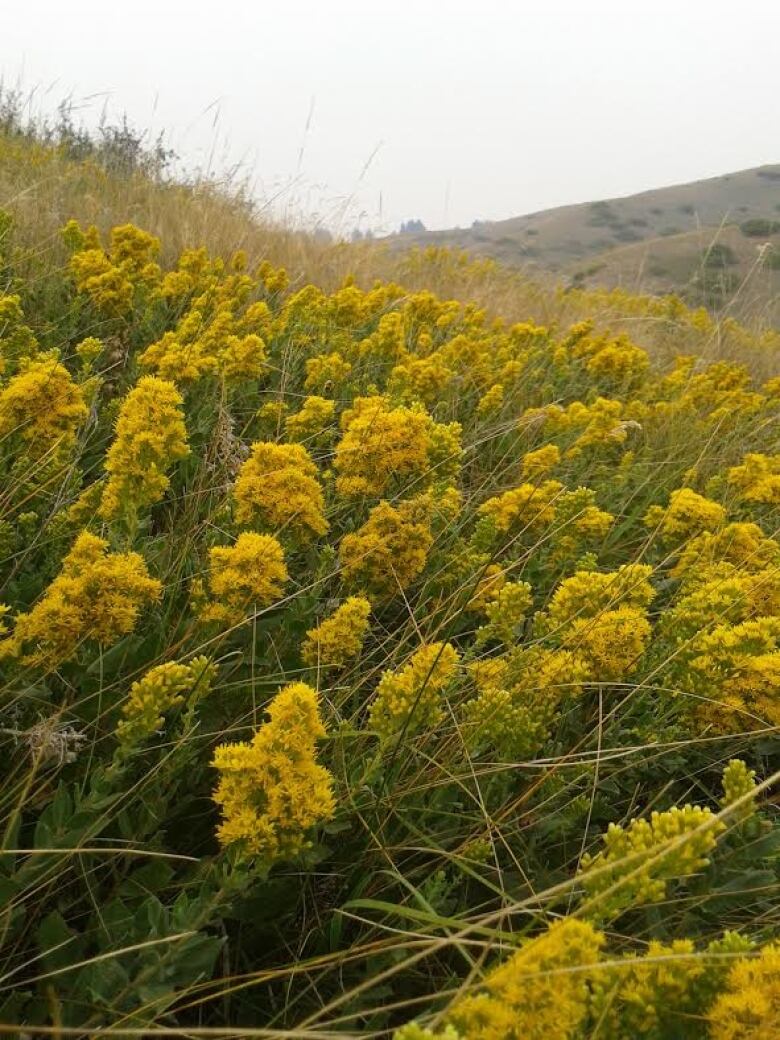#YouShouldGrowThis: goldenrod deserves your respect
Lyndon Penner says goldenrod is misunderstood because too many people see it as a weed.
In late summer and early fall, one of my favourite perennials is in full bloom. Itis the lovely goldenrod (Solidago). It does not get the attention or respect that it deserves. Goldenrod is long blooming, care-free and easy to grow. It provides armloads of flowers for cutting and it is also a major attractant to bees and butterflies. It rarely has any issues with pests or disease, though in cool, wet years powdery mildew can be an occasional problem.
If you have ever watched migrating monarch butterflies or great, furry bumblebees enjoying a September lunch of goldenrod nectar, you know the joy these plants bring.- Lyndon Penner
There are many species of goldenrod that are native to the plains of North America. Since many of them grow in our ditches and along our roadsides, perhaps this is the reason we ignore them. Familiarity breeds contempt, you might say. Some of the native species do not make good garden plants. They become floppy and flower poorly in cultivation.
Our native goldenrodhasbeen much embraced on the other side of the pond. Fabulous, vigorous cultivars have come out of both Germany and Holland in the last 20 years. 'Crown of Rays' is one such selection.It is extremely compact and heavy flowering. I love it with ornamental grasses and echinaceas, and it also looks wonderful with fall blooming asters. 'Golden Baby' is another excellent and vigorous strain worthy of your attention.

Goldenrod is too often ignored
Perhaps another reason that goldenrods are little regarded by North American gardeners is that they are often unfairly blamed for causing hay fever and allergies. I'm not sure where this myth came from, but it's totally false and frankly, ridiculous. Goldenrod pollen is heavy and not wind-borne.It is carried entirely by bees. The real culprit most times is sweet clover, or ragweed. Ragweedis a non-native plant that fills our ditches and parking lots and grows as tall as 6 ft., causing great misery to those who are sensitive to fragrance and suffer from allergies.
A good friend of mine has a glorious clump of goldenrod in the flowerbed in her front yard, and more than once passing strangers have told her that she "really needs to pull that goldenrod; it gives people hay fever." It most assuredly does not, and you can't just go around pulling perennials out of people's gardens no matter what you think of them! When I worked in garden centres, I always had a hard time selling goldenrod to people. No one ever wanted to buy it and I'm baffled by this because it's so lovely.

If you have ever watched migrating monarch butterflies or great, furry bumblebees enjoying a September lunch of goldenrod nectar, you know the joy these plants bring. They are inexpensive and easily acquired, and they also divide very easily so you can share them with friends. Grow them in full sun, average to poor soil with good drainage, and they will do just fine. They are quite drought resistant once they are established, and they will live for many years. Goldenrods should not be neglected- you should grow this.
Are you already growing goldenrod? Have some tips to share? Show us on Twitter @CBCSaskor Facebookand use the hashtags #YouShouldGrowThis and #YouShouldDoThis.












_(720p).jpg)


 OFFICIAL HD MUSIC VIDEO.jpg)
.jpg)



























































































